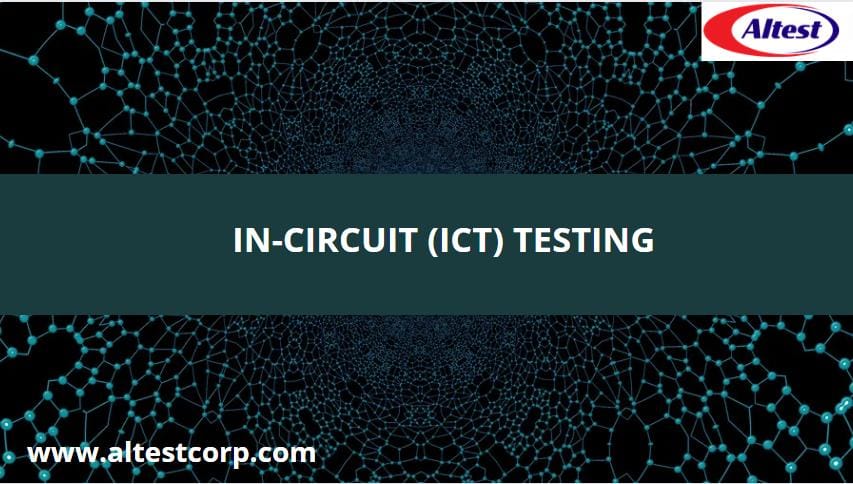Unlocking Efficiency with IC Decapsulation in Printed Circuit Boards

Admin, April 23,2024
In-Circuit Testing (ICT) 5 Pros and Cons
Manufacturers have to test PCB components and their function before making mass production. The test helps detect the flaws and correct them before selling the product. In this case, different testing methods are in practice, including in-circuit testing, flying probes, manual inspection X-ray inspection, etc. Here we will explore the in-circuit method.
In ICT, you have to connect the board to special equipment having test probes toassess various parameters of the PCB. Like, you can measure inductance, resistance, short and open circuits, and capacitance. It also helps you check the components’ placement and their connections. It is crucial to find if the PCB is working well or not and in-circuit helps, in this case.
The ICT equipment includes different pins or probes that can test several points at a time. Engineers can program the equipment according to various testing requirements. In-circuit testing is fast, precise, and reliable. At the same time, it has some drawbacks that we will also discuss in the end.
ICT-Identified Errors
You can use the in-circuit method according to the type ofdefect you are looking for. This is how the test can help you;
Detects software Issues: You can use the ICT to find bugs or software code errors. Like, it helps you detect runtime issues, logic issues, and syntax errors.
Detects Hardware Issues: At the same time, ICT can help you find hardware issues. Like, you can finddamaged components, poor sensors, or other issues with the circuit board.
Detects Security Issues: With the help of in-circuit testing, you can find security issues that software has to face. Like, you can detect a weak password, old software, or vulnerable protocols.
Detects Network Errors: You can use ICT to check if the infrastructure of the network is working well or not. Like, it helps find poor connectivity, routing errors, or any issues with the DNS.
So, ICT has multiple functions and you can enhance the quality of the PCB and its related software.
Pros and Cons Of In-Circuit Testing
Like other inspection methods, ICT has its pros and cons which we will discuss below.
5 Pros of In-Circuit Testing
1: It Reduces the Future Costs
When you detect any bugs earlier, it can help you reduce the future costs that go into bug fixing. It will help you develop an effective product. Moreover, by enhancing the quality of the product, organizations can attract more customers.
2: It Enhances Sales
By detecting and fixing the errors at an early stage, you can market your product faster. This is especially beneficial when there is bulk production of PCB.
3: Better Security
You can detect the security issues and solve them before moving ahead with more production. It helps you avoid attackers and get flawless results.
4: Helps Make Repairs
If there are any issues with the board, pads, components, or connectors, you can repair them before serious damage. The repair cost also gets reduced as you don’t have to correct many boards.
5: Addresses Multiple Errors
It helps you address multiple issues simultaneously, making the process fast. Eventually, ICT can help you have fast production
5 Cons of In-Circuit Testing
1:Not Ideal For Thick Boards
It becomes hard to test high-density circuit boards with ICT, so the probing time increases.
2: Difficult To Maintain
The testers need frequent cleaning, but ICT equipment has several probes, so it becomes hard to clean them.
3: Expensive Tool
The equipment is expensive that increases the initial cost. So, small PCB companies can’t afford it.
4: Missing Areas
Sometimes the test pins don’t connect with the test areas, so they get neglected. In other words, you have to carefully watch the inspection process. ICT is not ideal for sensing low-voltage levels due to poor access to the components.
5: Not Suitable For Small Productions
Since the equipment cost is high in ICT, it is not ideal for small productions.
How Many Types of ICTAre There?
The in-circuit testing has three types, such as:
Conventional ICT: It is also, known as the bed-of-nails (BON).You can customize it according to your requirements. It has spring-based probes to connect to a board. It checks the electrical properties of the board. It is a popular practice for high-volume production but special fixtures make it expensive. Besides, the design of such an inspection system involves more time than advanced methods.
Advanced ICT: It consists of flying probes rather than fixtures or a bed fixed with pins. The probes move over specific test points, and they can access any part of the circuit board. It is cheaper than the conventional ICT method and suitable for a small volume. However, its speed and coverage are lower than BON.
Cable Tester: Such an ICT method helps check cables and involves high voltage. It helps in testing the insulation at different intervals.
Whatever type you use, it should have software, powered analog, controller, analog scanner, and digital opens. All the ICT methods have some pros and cons and what you consider depends on your needs.
Factors Affecting the Cost of ICT
The cost of in-circuit testing depends on multiple factors, such as:
- The cost of testing the same boards is less than the cost of ICT for several different boards.
- The fixture cost in BON is less for smaller PCBs having compact components.
- Complex circuit design needs a deep inspection compared to a simple layout. So, the cost is higher in complex designs.
- More testing time means more cost. However, ICT is a fast method as it produces results within minutes.
In general, ICT ranges from $10000 to $50000, depending on the above factors.
When to Choose ICT
Generally, the in-circuit testing is ideal for surface-mount technology. However, you have to consider a few things before selecting this method. You can choose it in certain conditions like:
- When you want to have the same design for 2 to 4 years.
- If you want a long-lasting product as ICT provides high-quality results.
- It is ideal for bulk products as it can inspect multiple boards at a
Easy-to-Detect PCB Faults Through ICT
- With the help of in-circuit, you can detect short circuits occurring between multiple conductive components. Likewise, it helps find open circuits if there is no response by a specific point during
- ICT can help find a difference in component values. It does so by comparing the original data with the one that appears after testing.
- If any test point does not react to probing, it’s a sign of a missing component.So,you can arrange and install the missing components at the right time.
- ICT can also detect soldering issues, such as poor or no soldering, and virtual soldering. It sends signals to the solder joints and finds an issue if it gets an abnormal reaction.
In-circuit testing can find misaligned components. It can also check the polarity of the components, including diodes, indicators, and capacitors. Moreover, it checks poor connections and damaged pins which occur if the resistance value is lower than the standard value.
Finding PCBA Quality Through ICT
This is how ICT processes and ensures the quality of the PCB assembly.
Choose Right Tools
You have to focus on equipment, in this case. The tool should assess the issue accurately by measuring the values. Certain points on the PCB should show the voltage in the device.
Have Expertise
PCB engineers must have good experiencein using the testing equipment. He should know how and which points to check for specific parameters.
ICT Equipment Design
The engineer should be capable enough to design the texting fixtures through CAD. Then, the manufacturers should develop the fixture according to the design data. So, both the design engineer and the manufacturer should work together, in this regard.
Execute Inspection
The test results also depend on how well is the execution.PCB company should execute the test according to the process created by designers, and using the right equipment.
Assessing Results
The assessment of ICT-provided results is crucial. Only good assessment can help you remove the errors or make repairs accordingly.
Note: The testing fixtures, procedure, and equipment play the main role in this regard. You have to hold the circuit board with custom fixtures to allow the tools to measure specific factors. The hardware, in this case, includes a digital multimeter, an ICT tester plus any other equipment essential to analyze data. It helps you find the current on specific points to make sure the board will work well.
Equipment Health
The testing equipment should be well-maintained to ensure its function without interruption. You should regularly clean the testing tools and also store them carefully.
Final Thoughts
In-circuit testing can effectively detect errors in a circuit board. It has both conventional and advanced methods that you can choose according to your project. You can measure inductance, resistance, short circuits, open circuits, polarity, and capacitance. ICT also helps check the placement of the components and their connections.However, this testing method has some limitations as it cannot detect the internal parts so you have to retest the board through system testing.
Share:
